Nov
16
2013
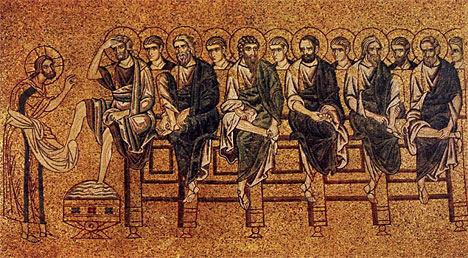
How to Fulfill the Law
“…men are enthroned as elohim (judicial ‘gods’) but not as God intended. Those who sit in the seat of Moses often lack his meekness before God, and their rule is like that of Lamech. Their seventy times seven ‘fulfilling of the Law’ is vengeance not forgiveness.”
We continue with the Deuteronomy section of Galatians, which has seven cycles. Paul moves from an Ascension/Firstfruits motif to an Testing/Pentecost motif. Being the center of this final group of cycles, and at the center of its Ethics cycles, here we have its turning point. The first half of this cycle is about sacrificial binding. The last half is about being loosed on account of the sacrifice.
Continue reading
Comments Off | tags: Galatians, Literary Structure, Paul | posted in Bible Matrix, Biblical Theology, Christian Life, Ethics
Nov
7
2013
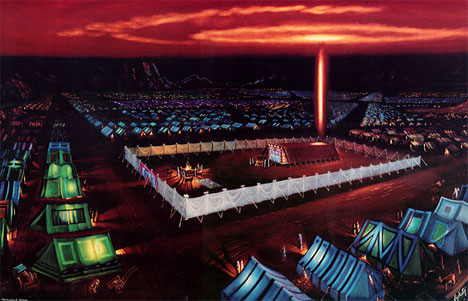
Part II – The Black Sabbath
“For the cloud of the Lord was on the tabernacle by day, and fire was in it by night,
in the sight of all the house of Israel throughout all their journeys.” (Exodus 40:8)
Continued from The Household of Faith – 1
“You shall kindle no fire in all your dwelling places on the Sabbath day.” (Exodus 35:3)
Israel took the man who was collecting kindling on the Sabbath and nipped his sin in the bud. His intentions were plain, so they wanted to know what should be done with him. It sounds brutal, but Exodus and Leviticus give us a plethora of strange laws for Israelites. At least, they seem strange until we understand that not only was Sinai replicated in the Tabernacle, the Tabernacle was to be replicated in every Israelite tent, and indeed in every Israelite. Every household was a tent of God, a cloud, and every Israelite a burning star in the sky. The tribes were, after all, arranged around the tent in military “constellations.” This new Black Sabbath was to reconnect every tent with its source, the tent of God.
Continue reading
1 comment | tags: Exodus, Feasts, Moses, Tabernacle, Tabernacles | posted in Bible Matrix, Biblical Theology, Creation
Nov
5
2013
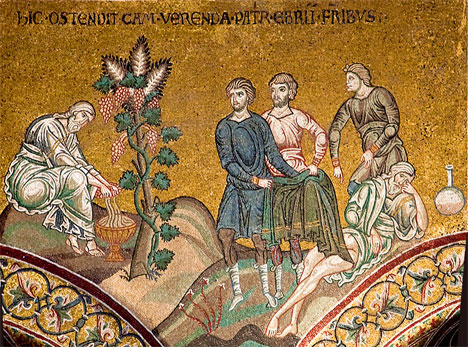
or Semina Divina
And Jesus, perceiving in himself that power had gone out from him, immediately turned about in the crowd and said, “Who touched my garments?” (Mark 5:30)
We aren’t told in Genesis 9 what Ham’s intention was when he “uncovered” his father, Noah. Peter Leithart and James Jordan both present some fascinating insights (which differ from each other), but perhaps there is a solution elsewhere in Genesis, which, combined with both these possibilities, offers something new.
This post has been slain and resurrected for inclusion in Praxeme: Journal of Systematic Typology.
Continue reading
Comments Off | tags: Abraham, Ark of the Covenant, Covenant curse, Covenant Theology, Genesis, James Jordan, Literary Structure, Moses, Noah, Peter Leithart | posted in Bible Matrix, Biblical Theology
Nov
2
2013
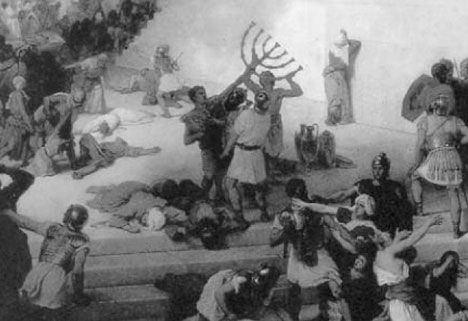
Jesus answered them, “Destroy this temple, and in three days I will raise it up.” (John 2:19)
Every one of God’s houses throughout Bible history has a “former days” and a “latter days.” Each goes through a process of death and resurrection, a “purification by fire.” Following the Bible Matrix, the central “slaying” of every row has a Day 4 symbol, something related to “the governing lights,” the all-seeing eyes of heaven.
Continue reading
Comments Off | tags: AD70, Covenant Theology, David, Ezekiel's Temple, Solomon, Tabernacle, Tabernacle of David, Temple | posted in Bible Matrix, Biblical Theology, The Last Days
Nov
1
2013
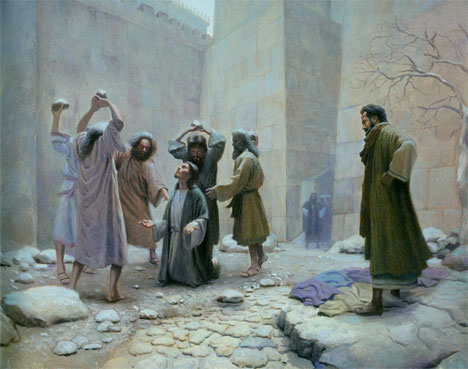
A Debtor to the Law
“Any commentary that misses the fact that the first century isn’t about Jew versus Gentile, but about the Noahic nations of the old world versus the birth of the Christian nations of the new, is way off the mark.”
We continue with the Deuteronomy section of Galatians, which has seven cycles. Paul moves from a Division/Passover motif to an Ascension/Firstfruits motif. That is, Paul gets all Levitical. It’s all about sex and death.
Continue reading
Comments Off | tags: Acts, AD70, Circumcision, Firstfruits, Galatians, Literary Structure, Stephen | posted in Bible Matrix, Biblical Theology, The Last Days
Oct
30
2013

“And as he prayed, the appearance of his countenance was altered, and his clothing was white and glistening.” (Luke 9:29, King James 2000 Bible)
The Tabernacle was covered in three layers: linen, red-dyed ramskin, and a third layer of tachash. What’s tachash? The word is a mystery, and there have been many suggestions concerning its meaning, from unicorn to dolphin. But perhaps that mystery has now been solved. And the glistening solution is nothing like you’d imagine in a million years.
This post has been slain and resurrected for inclusion in my 2015 book of essays, Inquietude.
Continue reading
3 comments | tags: Baptism, Esther, Exodus, Ezekiel, High Priest, James Jordan, Job, Leviathan, Tabernacle, Temple | posted in Bible Matrix, Biblical Theology, Creation, Quotes
Oct
28
2013
 Born from Above
Born from Above
I’m currently working hard on Bible Matrix III: The House of God. This third volume is bigger on the inside than it is on the outside. It really is. Being so engrossed in the shape and processes of the Bible (yes, even more than usual), it has struck me how foreign the various theological schools’ thinking and speech is to the actual text.
The debates about “Pauline Theology” are the perfect example, especially the focus on narrow (yet important) topics such as justification. An academic divides and redivides the text in the way an expert in any science overspecializes. He ends up knowing everything about nothing. After spending a few hours each day wandering and describing the halls of biblical architecture, I am more convinced than ever that the only way to fully understand Scripture is architecturally. This is because, for our glorious God, architecture is ethics, and ethics is architecture. Divorced from the biblical mud map, the Edenic grid, modern theologians are discussing less than a dim distorted reflection of the book God has given us. They are feeling their way around the house with their eyes shut. Continue reading
Comments Off | tags: Abraham, Baptism, Circumcision, Covenant Theology, Deuteronomy, Exodus, Feasts, Galatians, Genesis, Literary Structure, Moses | posted in Bible Matrix, Biblical Theology
Oct
24
2013
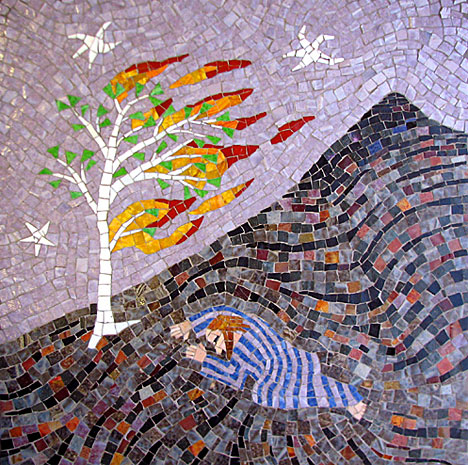
“Once the architecture is taken into account, the text is not ridiculous but terrifying. It marches inexorably through the deep rhythm of the seven days with laser precision, stately deliberation, and omniscient vision. These words were breathed by the source of all breath.”
Part I – Picking Up Sticks
“You shall kindle no fire in all your dwelling places on the Sabbath day.” (Exodus 35:3)
Many Christians ignore, and atheists poke fun at, the weird bits of the Bible, as though these texts are primitive, distorted, or contrived. Nothing could be further from the truth. The truth is that these texts are designed to choke the faithless, and to be chewed over, meditated upon by the faithful, that we might be changed.
Why was fire forbidden on the Sabbath? The first thing to do with any text is identify its context. No more treating Bible texts like fortune cookies, do you hear me?
Continue reading
Comments Off | tags: Booths, Covenant curse, Covenant Theology, Exodus, Feasts, Literary Structure, Moses, Numbers, Tabernacle | posted in Bible Matrix, Biblical Theology
Oct
22
2013

When Moses is given the Ten Commandments they are written on two tablets:
And he declared to you his covenant, which he commanded you to perform, that is, the Ten Commandments, and he wrote them on two tablets of stone. (Deuteronomy 4:13)
Why are the Ten Commandments written on two tablets? Was one tablet not big enough for God’s handwriting? Or did God give Moses two copies of the Law, one tablet being a duplicate of the other?
Continue reading
Comments Off | tags: Aaron, Covenant Theology, Exodus, Literary Structure, Meredith Kline, Moses, Ray Sutton, Ten Commandments | posted in Bible Matrix, Biblical Theology, Q&A



































